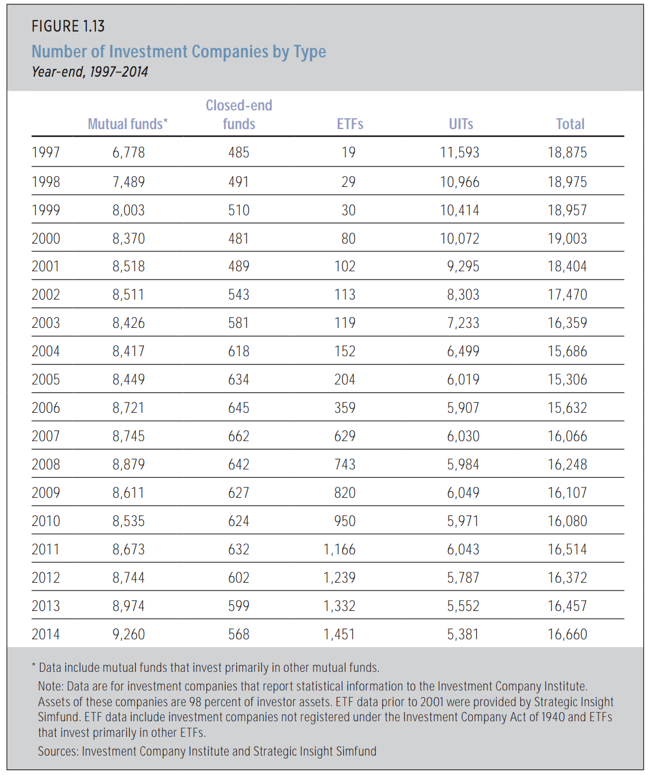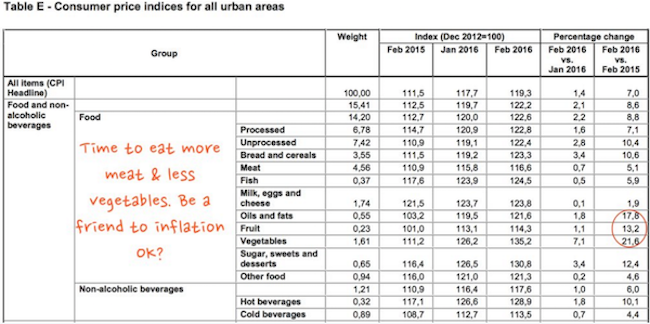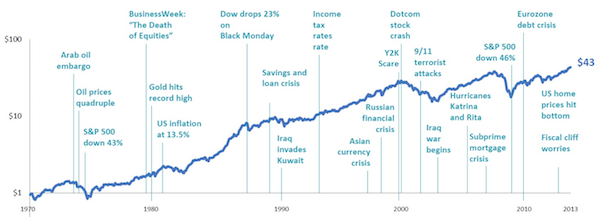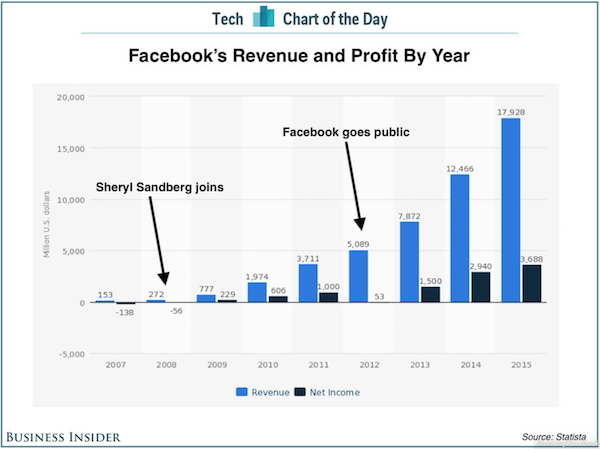"The weaker currency and the drought are starting to feed through to Joe Consumer. Petrol prices, bread and cereal prices, oils and fats, fruit, as well as vegetables (up nearly 22 percent year on year) are all way more expensive in this environment. Food forms 14.2 percent of the inflation basket, transport forms 16.32 percent of the basket, the biggest input is housing and utilities at 24.52 percent. All of those segments collectively are comfortably outside of the band the central bank thinks is acceptable (3-6 percent)."
The new blunders video is up, you must watch it sports lovers: Blunders - Episode 7. It includes Donald Trump, a sports management business in East London with no events and big budgets, as well as Salmon ingesting bad stuff. In order to subscribe to the Blunder Alert!, follow the link to get the mail delivered to your inbox.
To market to market to buy a fat pig It was not a good day yesterday for equity markets, it has been a great recovery since early February. Over the last month the S&P 500 is up 6 percent, the Jozi all share is better by 4500 points, the high single digit gains. In fact, Bloomberg stuck up a chart of markets around the world back in a bull market. What kind of technical nonsense is that, measuring where you are from the highs and lows and then labelling it? One of the mostl widely owned trackers of markets globally is the code SPY in the US, there is nearly 180 billion Dollars in that one alone, which I guess is not THAT much, it is a lot. According to Wikipedia, index funds have only really been around for four decades, let us just say that investors are still working this out.
I think that Buffett's will leaving his surviving spouse 90 percent of his assets to be in an index tracker tells you a lot. It tells you that for folks who are not really interested in stocks, the better option over retirement savings is definitely an investment of this sort. If you have a friend, or family member that isn't in the interest of owning a spread bunch of equities in a stock portfolio, then low cost index tracking is definitely the way forward. Rather than complicated products. Of course I could argue that the meatier end of the market is owning single stocks. Legendary investor Peter Lynch always pointed out that you only really needed one ten bagger to guarantee outperformance.
Perhaps the index tracking fund space has become too crowded. I remember back when people still used to read newspapers (OK, they still do), I used to tell them to go and have a look at the Unit Trust segment, which took up many more lines than the actual listed equities. Why would there be tons and tons of mutual funds over listed equities, surely that is too many. Or are they money making machines for the institutions that collect savings month in and month out. According to the Investment Company Institue, as per their website: "As of December 2014, the total number of index-based and actively managed exchange-traded funds (ETFs), including commodity ETFs, domiciled in the United States stood at 1,411. Total net assets of these ETFs were $1.974 trillion and accounted for 13 percent of total net assets managed by long-term mutual funds, ETFs, closed-end funds, and unit investment trusts at the end of 2014."
Bear in mind that the number of listed companies in the US has actually been shrinking in this time too. In 2014 however, there was 33.4 trillion Dollars invested in mutual funds and ETFs. More than half of which was in the US, topping 18 trillion Dollars for the first time. By the end of 2014 (all the data that I could find, sorry), there was 15.8 trillion Dollars in mutual funds, 101 billion Dollars in unit trusts, 1.974 trillion Dollars in ETFs and 289 billion Dollars in closed end funds (the original), represented in a total of 16660 investment vehicles.

Unit trust numbers have halved over 20 years, there used to be nearly 12 thousand of those in the mid nineties, a total of 18 and a half thousand options rose (and possibly peaked) in 2000, at 19 thousand. ETFs have been the recent benefactors. There were (according to that data, follow link above) only 19 ETFs in 1997 in the US, there are now as you can see, nearly 1500. It makes life both easier and harder for retail investors. In the same way that there is an app for that, there is no doubt an ETF for that too.
In August last year, where we had another massive sell when stocks were sold off heavily, part of it was as a result of a lack of liquidity and a rush for the exits. It was Carl Icahn who said to Larry Fink that he thought the ETF community would spark a big sell off at some stage, blaming the ETF industry for the volatility mostly in the bond market, to be fair. Anyhow, it takes many to make a market, one bunch of investors rushing for the door are another set of investors opportunities. The rise of the ETF market is good, it attracts more entrants. With more entrants, there are more opportunities, more crowded trades. It is what it is, you can't stop the momentum. What I think is quite telling is the fact that a rise and fall of different investment options could come and go again, the underlying, being the equities that one holds, remains the same. Which is why we prefer the direct method.
Stocks locally sank over one and a half percent, mostly some selling amongst the resource stocks, and in particular the single precious metal producers. Gold and platinum stocks were hit hard, it has still been an incredible rally for those as a collective since the beginning of the year. The biggest concern in the local market however was no doubt the inflation read, which breached the upper end of the Reserve Bank's expectations and possibly puts in place more scope for raising rates sooner rather than later. Bear in mind that at the last meeting there were split views on raising rates, in the end the South African Monetary Policy Committee raised rates by 25 basis points.
Herewith the CPI data for February from StatsSA -> Consumer Price Index - February 2016. The weaker currency and the drought are starting to feed through to Joe Consumer. Petrol prices, bread and cereal prices, oils and fats, fruit, as well as vegetables (up nearly 22 percent year on year) are all way more expensive in this environment. Food forms 14.2 percent of the inflation basket, transport forms 16.32 percent of the basket, the biggest input is housing and utilities at 24.52 percent. All of those segments collectively are comfortably outside of the band the central bank thinks is acceptable (3-6 percent). Herewith a comment below that I stuck out on Twitter, seeing as meat inflation is low:

The upshot of it all meant that banks, financials, and retailers are likely to come under more pressure as Mr and Mrs. (and Ms and Master) consumer comes under pressure in the current higher rates environment. I suspect that the SARB is mindful that demand is low and weak. So perhaps a pause, and a wait and see would be advisable. Who wants to be a a central banker with tons of armchair critics and almost always a case of you are damned if you do, damned if you don't scenario. In the US, things are looking so much better that another rate hike may come sooner. Ah, how things can shift so very quickly.
Linkfest, lap it up
Josh Brown gives a quick look at how markets have responded in the past to crisis events. It would seem that markets were less rattled by the bombs in Brussels than previous terrorist events - The Market's Response to Crisis

The next big battle ground in business will take place in the cloud. As we shift toward a more digital world and as the Internet of Things (IOT) grows, the need to store data on the cloud becomes ever increasing - Google's cloud business nabs Home Depot as client.
Here is a look at the unbelievable growth that Facebook has had, even since listing their top line numbers have more than tripled - Facebook

Home again, home again, jiggety-jog. Stocks are off globally, there is of course the small matter of a four day weekend here. What? Again? Hong Kong stocks are down over a percent and one quarter, in Shanghai stocks are down half a percent, Japanese stocks are off two-thirds of a percent. Here, we should unfortunately expect another day of selling.
Sent to you by Sasha and Michael on behalf of team Vestact.
Follow Sasha, Michael, Byron, Bright and Paul on Twitter
078 533 1063
No comments:
Post a Comment